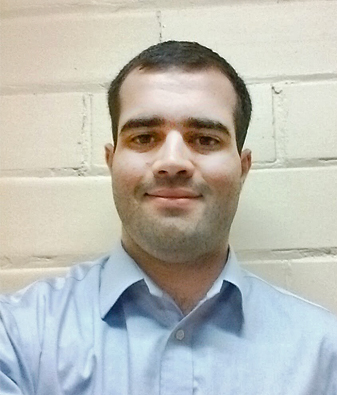Chlorinated paraffins are a class of toxic chemicals commonly used to soften plastic — making toys supple, computer wires pliable and headphones comfortable, for instance. Since 2013, they have been prohibited in Canada under the federal Canadian Environmental Protection Act due to their known health harm. However, a new first-of-its-kind University of Toronto study proves that these prohibited chemicals are far more prevalent than they should be — in everyday household objects.
Despite the ban, chlorinated paraffins are still detected at high concentrations in the dust and air of indoor environments. Researchers in the Department of Chemistry in the Faculty of Arts & Science set out to investigate the source of these continuous emissions. They found high concentrations of short-chain chlorinated paraffins (SCCPs) in 84 of 96 indoor consumer products they tested, including electronics, children’s toys, clothing, personal care products and indoor paints.
The results were published recently in the journal Environmental Science: Processes & Impacts.

“We analyzed a wide array of household items — some newly purchased from Toronto retailers, others donated by lab volunteers — hoping to confirm that these chemicals were no longer present. Instead, we were surprised to find chlorinated paraffins in over 87 per cent of these products that are currently marketed in Canada,” says lead author Steven Kutarna, recent PhD graduate of the Department of Chemistry.
It was also surprising that certain products contained extremely high concentrations of the chemicals. Headphones and computer wires had the highest levels, with plastic children’s toys and toy packaging next.
“We’re particularly concerned about children’s products like teething toys, because kids are putting these toys in their mouths — a direct route for exposure,” says co-author Hui Peng, assistant professor in the Department of Chemistry and cross-appointed to the School of the Environment.
The researchers note that other studies show short-chain chlorinated paraffins cause cancer in laboratory rats and mice. They also build up in our bodies, food webs and environment. Though there are no human studies, the International Agency for Research on Cancer classifies SCCPs as possible human carcinogens, and in 2017 the Stockholm Convention listed them for elimination due to their persistence and toxicity.

Nonetheless, their total global production is huge — more than 1 million tonnes per year. Since the tested products were largely manufactured for an international market, chlorinated paraffins are likely also found in similar products in the U.S., Europe and beyond.
While this study may be the first systematic investigation of the occurrence of chlorinated paraffins in indoor products, Kutarna notes that there have also been a few studies looking at levels in specific subsets of products — for example, a recent study found that hand blenders were the source of chlorinated paraffins detected in cat food.
“By the same token, we found trace amounts of SCCPs in personal care products we tested, like skin creams and shampoos,” said Kutarna. “These levels are low enough that we suspect they originated from the containers in which these products are stored.”
Peng and Kutarna say that the ongoing presence of chlorinated paraffins in consumer products is likely due to a lack of rigorous testing and monitoring along the supply chain.
“In Canada, SCCPs are prohibited for import, but there are still a lot of products coming in with high concentrations of these chemicals,” says Kutarna. “They pose a technical challenge to quantify, product testing is expensive and manufacturers don’t disclose them as ingredients. It’s pretty much impossible for consumers to tell if these chemicals are in products.”
Peng adds: “Think, for example, of a laptop manufacturer that purchases plastics from many different producers around the world, that are not required to list these compounds in their formulations. It’s a major hurdle for regulation, and it's possible that many manufacturers are unaware that their products contain SCCPs in the first place.”
Peng and Kutarna say that since they found SCCPs to be widespread in plastic products, the best thing the average consumer can do to limit exposure is minimize their use of plastics. But the onus is on government and corporations.
“There needs to be better transparency in the supply chain,” says Peng. “It should be required to report the presence of chlorinated paraffins across all stages of production, and retailers should take action to remove products containing these chemicals from their shelves.
“In Canada, we have the regulatory policy in place — so it’s about stronger enforcement.”
As for next steps in their research, Peng and Kutarna will continue to investigate the presence of chlorinated paraffins in indoor environments, and how these chemicals accumulate in fish and other marine life.
With files from Green Science Policy Institute.

